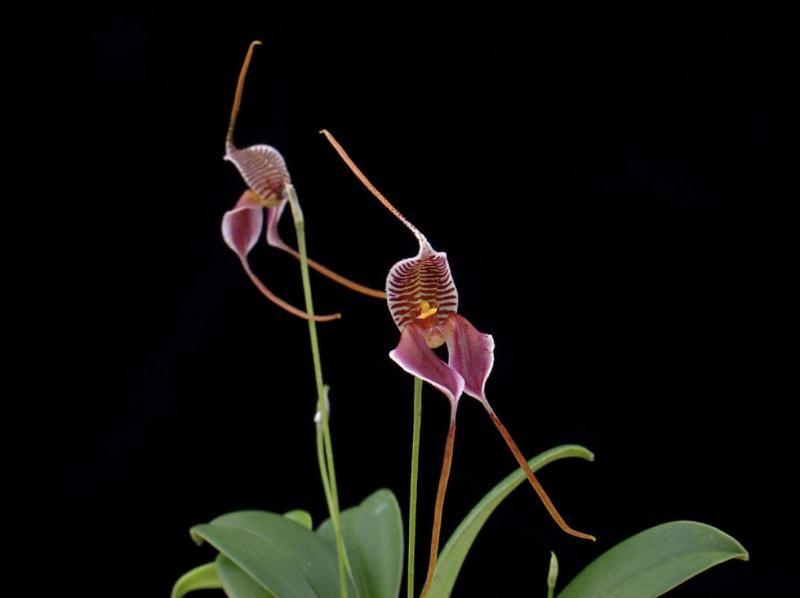Masdevallia meleagris
Also known as: The Guinea Fowl Spotted Masdevallia in the subfamily: Epidendroideae
Native to: Departamento del Cauca - Colombia Departamento del Huila - Colombia
General Information
The Guinea Fowl Spotted Masdevallia is a sympodial warm growing orchid belonging to the sub family Epidendroideae native to Colombia.
Plant Description
Sympodial. Grows to 1.5-15cm. Each new growth has numerous leathery erect, elliptic, oblong shaped leaves that grow to 1.6-12.5cm long
Flowers
Numerous blossoms appear during Summer and Autumn
Blooming Season
- Autumn
- Summer
Substrate(s)
- Coarse
- Bark
- Treefern
- Spaghnum Moss
- Perlite
Climate
Grows at high elevations. Rainfall ranges from 33mm to 277mm per day, heaviest in November and lightest in August. Humidity ranges from 62% to 79%, highest in December and lowest in August. Temperature ranges from 10C to 24C, highest in August (11C to 24C) and lowest in May (10C to 23C).
Watering
These orchids prefer a wet-dry cycle between waterings, they should be watered frequently but only when the moisture is approaching dryness, where the pot feels light and/or the media looks dry. Keep an eye on mounted orchids in warm weather as they may dehydrate quickly.
Keep moisture levels up during hot weather as the plant is prone to dehydrationFertiliser
These orchids do not need to be regularly fertilised and roots may be sensitive to salt build-up, dying back and therefore impairing the plants growth or even killing it.
If fertilising, use half to quarter of the recommended amount of fertiliser. If they receive fertiliser as part of a collection, be sure to flush out the pots regularly with fresh water and monitor the roots by checking how much resistance is given by the plant when nudged in its pot or mount. If the plant becomes wobbly or loose, repot in fresh mix or rinse the media/mount thoroughly and do not fertilise for at least 3 months.
Use balanced fertiliser year round. Apply fertiliser regularly at half strength year round. This plant is sensitive so apply fertiliser sparingly at one quarter recommended strength or less. Use a high Nitrogen fertiliser year round. Use a high Phosphorous fertiliser during Summer.Potting
Use water retentive media such as moss to prevent roots from drying out quickly This plant does well mounted to Cork slabs. Repotting is best done annually.




